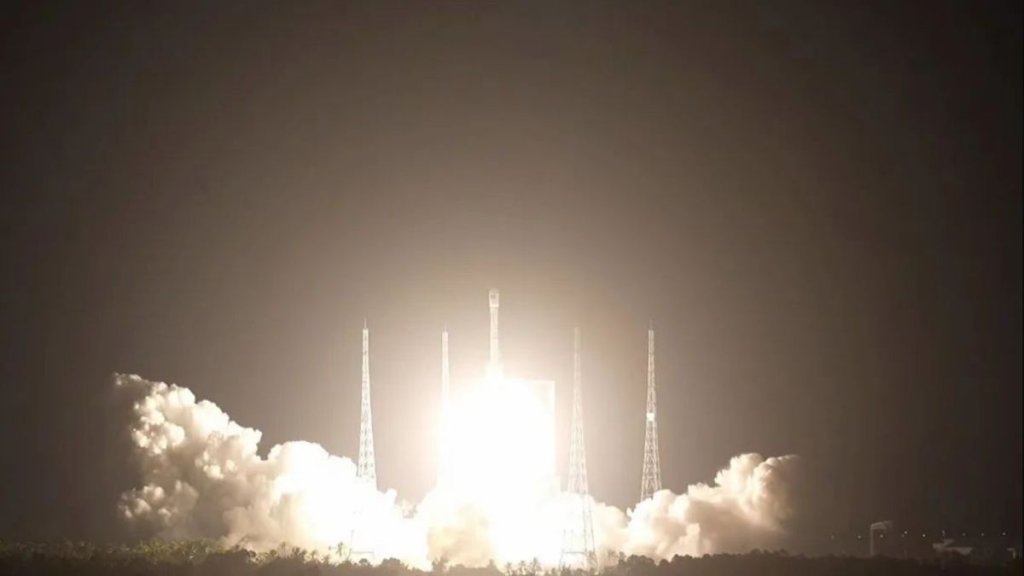China launched what it describes as an experimental communications technology satellite late last week.
A Long March 7A rocket lifted off from the coastal Wenchang Satellite Launch Center at 10:54 a.m. EDT (1454 GMT, or 10:54 p.m. Beijing Time) on Friday (Nov. 3). The payload was revealed to be Tongxin Jishu Shiyan Weixing-10 (TJS-10) by the state-owned China Aerospace Science and Technology Corporation (CASC) when the organization announced launch success within an hour of liftoff.
Chinese state media outlet Xinhua described the satellite as being “mainly used for multi-band and high-speed communication technology experiments.”
Related: Watch China launch more classified Yaogan spy satellites (video)
The satellite is in a geosynchronous transfer orbit (GTO) and will insert itself into the geostationary belt, around 22,236 miles (35,786 kilometers) above Earth, in the near future.
Neither CASC nor state media provided any additional details of the satellite. The lack of information and on-orbit activities of TJS satellites have caught the attention of analysts and may be a cover name for satellites for a range of different uses.
TJS-3, both nominally and described as a communication test satellite, launched in December 2018. It has, however, apparently made close approaches to, and checked out, satellites owned by other countries. Other satellites in the TJS series are speculated to be for signals intelligence and missile early warning tests.
The satellite was, like earlier TJS satellites, developed by the Shanghai Academy of Spaceflight Technology (SAST), one of the major space subsidiaries of CASC.
The Long March 7A is a 197-foot-tall (60 meters) variant of the Long March 7 rocket and is designed to send spacecraft into GTO. It is also a nontoxic alternative to the workhorse Long March 3B. The standard Long March 7 is used to send cargo spacecraft to China’s Tiangong space station.
Friday’s launch was China’s 51st of the year. Chinese plans released early this year indicate that the country is aiming to launch more than 200 spacecraft on around 70 missions across 2023.

